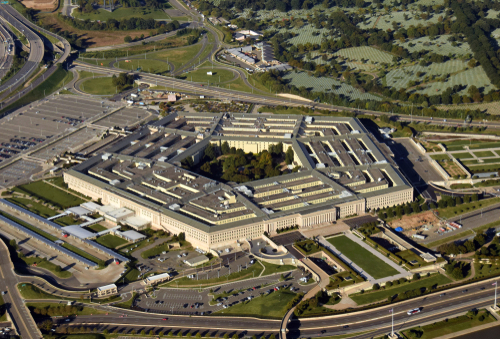The U.S. Department of Energy (DOE) has announced $104 million for energy conservation and clean energy projects at 31 federal facilities, with more funding on the way. The projects align with President Joe Biden’s goal for the federal government to “lead by example” on sustainability.

This represents the first of three disbursements from $250 million allocated under the Bipartisan Infrastructure Law for the DOE’s Assisting Federal Facilities with Energy Conservation Technologies (AFFECT) program. Established in 1992, AFFECT helps agencies cut energy consumption—and taxpayers save money—through building electrification, geothermal heat pumps, on-site solar generation, and battery energy storage, among other initiatives.
The newly awarded projects will advance President Biden’s December 2021 Executive Order calling on the federal government to achieve a 65% reduction in greenhouse gas (GHG) emissions from operations by 2030; 100% zero-emission vehicle acquisitions by 2035; and a net-zero building portfolio by 2045.
“President Biden has charged the federal government to lead by example by transforming its footprint of over 300,000 buildings to be more energy efficient and climate resilient, which means cleaner air across the country,” said White House Council on Environmental Quality Chair Brenda Mallory. “This investment, part of the president’s Investing in America agenda, will help achieve the administration’s ambitious federal sustainability goals while creating thousands of good-paying jobs, saving taxpayers money and building healthier communities.”
Project Highlights
Mallory joined U.S. Energy Secretary Jennifer M. Granholm and Deputy Secretary of Defense Kathleen Hicks to make the announcement at The Pentagon.
Following an unprecedented number of applications, the DOE selected projects for facilities of the Social Security Administration; the U.S. Departments of Commerce, Defense, Energy, the Interior; Transportation, and Veterans Affairs; the U.S. General Services Administration; and the U.S. Office of Personnel Management.
Selected projects include:
- Installation of rooftop solar panels, a heat-recovery heat pump system, and solar thermal panels to reduce reliance on natural gas and fuel oil combustion systems at the U.S. Department of Defense’s Pentagon in Arlington, Va;
- Installation of LED lights and occupancy sensors in low-occupancy areas and application of solar PV film on south-facing windows to conserve and generate energy at the U.S. Department of Transportation’s headquarters in Washington, D.C.;
- Replacement of evaporator diesel-powered boilers with electric boilers, with the potential to save $16 million in fuel costs per year, in the Waste Treatment and Immobilization Plant at the DOE’s Hanford Site in Richland, Wash.; and
- Replacement of a 35-year-old HVAC system with high-efficiency equipment, making enhancements to the building envelope including window replacements, and installation of a new 75 kW solar PV system and an advanced metering system, and implementation of water conservation measures at the U.S. Department of Transportation’s Maui Air Traffic Control Tower in Kahului, Hawaii.
View the full list of projects here.
The 31 selected projects are expected to double the amount of new carbon-free electricity capacity at federal facilities over the amount brought online in 2022, resulting in 27 MW of additional clean energy capacity. The projects will also help federal funding go further by leveraging more than $361 million in private investment.
In the first year of operation, the projects are expected to:
- Save more than $29 million in energy and water costs;
- Remove the same amount of GHG emissions from the air as taking 23,042 gasoline-powered vehicles off the roads; and
- Reduce energy usage by the equivalent of 29,662 homes’ annual electricity use.
Phase 2 Funding Opportunities
The DOE will begin accepting applications for the second round of AFFECT funding later in January. All energy and sustainability stakeholders across federal agencies, as well as private-sector organizations and utilities, are encouraged to engage in the program to drive clean, healthy, and resilient federal operations. Interested parties can subscribe to the FEMP Digest for the latest AFFECT news, feedback opportunities, and best practices for submitting Phase 2 applications.
